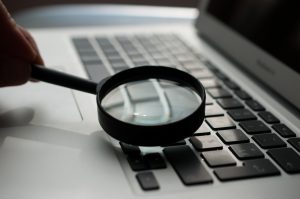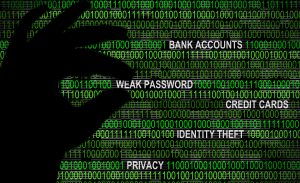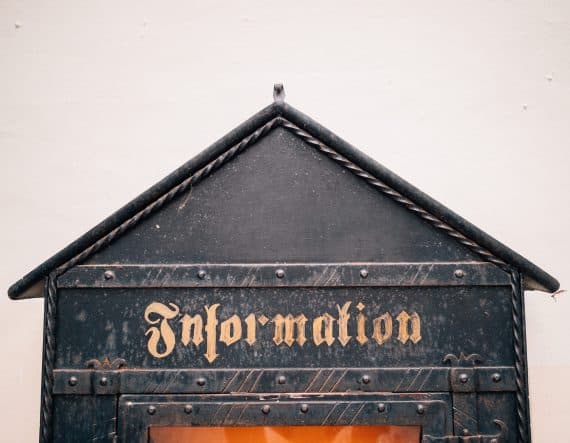How to Fix The Most Common Credit Report Errors

A study conducted by the FTC in 2012 found that about 25% of consumers had at least one error on one of their credit reports. Some of those consumers were paying higher interest rates on loans as a result of those errors bringing down their credit scores.
From this information, you can see that it’s all too likely that you may have an error in your credit report. Let’s go over some of the most common types of credit report errors and how to fix errors on your credit report.
How to Get Your Credit Report
The first thing you will need to do in order to identify errors on your credit report is, of course, obtain a copy of your credit report.
You can get your credit report for free from annualcreditreport.com, which is the only website authorized by the government to provide your annual free credit report.
Under the Fair Credit Reporting Act (FCRA), you are legally entitled to receive one free credit report from each of the three major credit bureaus once every 12 months. You can choose to order all three credit reports at the same time or order each individual report at different times throughout the year.
Watch out for other websites claiming to offer free credit reports or free trials, especially if they ask you for payment information.
However, there are some reputable websites where you can view a simplified version of your credit report for free, such as CreditKarma, CreditSesame, WalletHub, and Bankrate. They are able to offer this service by advertising credit products to users.
Inspect your credit report regularly to catch errors early.
You can also request a free credit report if you are denied credit because of information found in your credit report. The credit report must be from the credit bureau that provided the original report to the lender.
In addition, you can qualify for an additional free report if you are unemployed and planning to apply for jobs, if you receive government assistance, or if you are a victim of identity theft.
Credit experts recommend checking your credit reports at least once a year, so make sure to take advantage of any opportunities to get a free copy of your credit report.
You can also pay to get your credit reports directly from the credit bureaus.
Types of Credit Report Errors
Identity Errors
Your personal information is not accurate. For example, your name is misspelled or your address is incorrect. This is an indication that the credit bureau may be confusing you with another person. This can sometimes happen with family members who have similar names or live at the same address.
Your file has been mixed with someone else’s. If you see accounts on your credit report that belong to someone else who has a similar name or the same address, this could mean that your credit report has been merged with another person’s report due to having similar personal information.
There are accounts that you didn’t open. Accounts that you know you didn’t open but are listed in your name indicate that someone has stolen your identity and used it to fraudulently open accounts.
If there are accounts in your name that you didn’t open, your identity may have been stolen.
Account Information Errors
Accounts are reported more than once (duplicate accounts). Sometimes, the same account may be shown twice on your credit report. This can definitely hurt your credit if it’s a derogatory account that’s been duplicated.
An account reports that you are the primary owner of the account when you are actually an authorized user (or vice versa). It’s possible that the credit bureaus have mixed up who is the primary owner of the account.
Closed accounts are reporting as open (or vice versa). Sometimes, accounts that you have closed in the past will still be reporting as open. This can be problematic especially if it’s a negative account, such as a collection. On the other hand, if an open account is reporting as closed, that’s also a problem because it can hurt your utilization ratio.
There are late payments on your report, but you were on time. Late payments are highly damaging to your credit score, so if you’ve never been late paying your bills but your credit report indicates otherwise, that’s an error you’ll want to correct as soon as possible.
An account has an inaccurate open date or date of first delinquency (DOFD). If an account has an incorrect open date, this could change the age of the account, which could, in turn, impact your credit score. An incorrect DOFD on a derogatory account, such as a collection account, will affect when the negative mark falls off your credit report.
Accounts show incorrect balance or credit limit information. Some credit cards do not report a credit limit at all, which could hurt your credit utilization ratio. Alternatively, your credit report may not be showing the correct balance or credit limit, which could also potentially hurt your utilization.
Clerical Errors
Inaccurate data was added back into your credit report after being corrected. If you’ve corrected an error on your credit report but then see the same error pop back up again, it could be a clerical error on the part of the credit bureaus or the data furnisher.
Duplicate collection accounts with different debt collectors are all being reported as open accounts. As we explained in our article on collections, this situation is called “double jeopardy” on your credit report. If an account has been sold to a debt collector, there may legitimately be multiple accounts for the same collection on your credit report, but the original account should be updated to show that it has been transferred and should no longer show a balance owed. The collection agency that currently owns the debt should be the only entity reporting the collection as open with a balance owed.
There is negative information on your credit report that is more than seven years old. Negative information must be removed from your credit report seven years after the date of first delinquency, so if any derogatory information on your credit report is older than seven years, you can have it deleted.
How to Fix Errors on Your Credit Report
To get the best results, write a letter for each dispute and send your letters by certified mail.
If there are any errors on your credit report, you can contact the credit bureau that is reporting the inaccurate information to resolve the issue. Your credit report should contain information on how to file a dispute.
1. Gather All Necessary Information and Supporting Evidence
When you submit your dispute, it’s important to provide all the information the credit bureau will need to process your claim.
This may include the following:
An annotated copy of your credit report (circle or highlight the incorrect item)
Documentation to verify your identity (copies, not original documents)
A letter containing additional information about the item, an explanation of why it is incorrect, and a request to update or remove the incorrect item
Copies of supporting documents that provide proof of the item’s inaccuracy
The Federal Trade Commission offers a guide to disputing errors on credit reports and a sample FCRA dispute letter for consumers to use as a guide during the dispute process.
2. Submit Your Credit Dispute Letter Via Certified Mail
Although it is possible to dispute credit report errors online, many credit experts recommend instead writing a letter and sending it in the mail along with documentation to verify your identity and supporting evidence.
If you try to dispute an error online or over the phone, you may not have the chance to provide enough supporting evidence, and the credit bureau may dismiss your dispute as frivolous.
It’s also recommended that you send your letters by certified mail so that you have proof that the letters have been received. In addition, it’s a good idea to keep copies of your correspondence in case you need to get outside help.
3. Send a Separate Dispute Letter for Each Error
If there is more than one error on your credit report to deal with, it is best to send a separate letter for each dispute, since the credit bureaus may reject long lists of disputes as frivolous.
4. Consider Working With a Reputable Credit Repair Company
Annotate each error in your credit report and provide documentation supporting your dispute.
If you have a lot of errors to dispute or if you have been the victim of identity fraud, you may consider hiring a credit repair service to assist with the process. [Disclosure: This article contains affiliate links.]
5. Contact the Furnisher of the Incorrect Data
You should also contact the lender that furnishes the data to the credit bureaus to ensure the inaccuracy gets corrected at the source. The FTC also provides a sample dispute letter to send to data furnishers.
If you neglect this step, the error could show up on your credit report again the next time the lender reports to the credit bureaus.
6. If Your Identity Was Compromised, Consider Placing a Credit Freeze or Fraud Alert on Your Profile
If the error on your credit report was the result of identity theft, it might also be a good idea to contact the credit bureaus to place a fraud alert or credit freeze on your account.
A fraud alert requires lenders to take extra steps to verify your identity if someone is trying to open an account in your name, whereas a credit freeze blocks anyone from viewing your credit file except for businesses that you have existing relationships with.
Keep in mind that if you are planning to buy tradelines, you must have all fraud alerts and credit freezes removed first, or the tradelines will not post.
What Happens Next?
Once the credit bureau has received your dispute, they have 30 days to investigate your claim. If their investigation cannot verify the information on your credit report, they must update it with accurate information or delete the item.
In addition, the credit reporting agency is required to provide you with written documentation of the results of the investigation.
You are also entitled to get a free copy of your credit report from the company if your credit report has been changed as a result of the dispute. This free copy is not counted as one of your annual free credit reports from annualcreditreport.com.
Upon your request, the credit bureau must notify any entity who pulled your report in the past six months about the corrections made to your report. If anyone has pulled your report for employment purposes in the past two years, you can ask to have an updated copy of your report forwarded to them as well.
What To Do If You Disagree With the Dispute Results
Option 1: Add a Consumer Statement to Your Credit File
If your dispute is rejected and you don’t agree with the credit bureau’s decision, you have the option of adding a consumer statement to your credit report to explain the situation. However, this is not necessarily the best solution.
Firstly, the statement doesn’t get factored into your credit score, so it won’t help your chances when a lender uses an automated system to approve or reject applicants. If it’s a case where an underwriter is looking at your credit report, adding a consumer statement may just draw their attention to a negative item unnecessarily, especially if the item is older.
Option 2: File Another Dispute With Additional Information
Another option is to submit a second dispute with additional supporting documentation to try to get the credit bureau to investigate the dispute a second time.
Option 3: Submit a Complaint to the CFPB
If the credit bureau still fails to correct the information in your credit report, you can submit a complaint to the CFPB.
The CFPB may not be able to force the credit bureaus, as private companies, to do anything, but getting a government agency involved might encourage the credit bureau to rethink their position.
Option 4: Take Legal Action
Continuing to report inaccurate information after you have disputed it is a violation of the FCRA. If you feel that a credit bureau is violating your rights under the FCRA, you have the option of talking to a lawyer about potentially taking legal action.
Conclusions on Credit Report Errors
Unfortunately, errors on credit reports are very common, so we all need to be vigilant about monitoring our credit for fraud and inaccuracies.
Make sure to check your credit reports regularly by claiming your annual free credit reports as well as using a reputable free or paid service throughout the year. As soon as you spot any errors, try to get to the bottom of them and get them corrected both with the credit bureaus and with the data furnishers as soon as possible.
By making sure that your credit report only contains accurate and timely information, you are helping to protect your financial health and ensuring that credit report errors don’t stand in the way of future opportunities.
Read more: tradelinesupply.com







